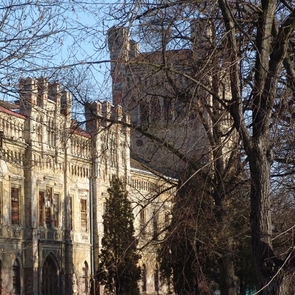
The city of Galanta (pop. 16.500) is situated in the SW part of Slovak Republic, about 50 kms NE from the capital city, Bratislava. Galanta pioneered in the use of renewable energy sources among the countries behind the “Iron Curtain” by developing its own geothermal-based district heating system in the early 1980s. The two production wells (FGG-2 (drilled in 1982) and FGG-3 (in 1984)) - tapping into the reservoir of Upper Pannonian sandstone (similar to the one at Morahalom) at 2101m and 2102m depths respectively - provide the necessary quantity (regulated 20-25 l/s each) of the 78°C geothermal fluid for a whole district of the city, where it is utilised as a heating agent and also for DHW purposes.Read more
Prior to the launch of the project multiple apartment buildings, a hospital, an elderly home, a nursery and an elementary school was connected to the heating system. The current legislative framework in effect doesn’t regulate reinjection, which accounts for the discharge of about 0.5 million m3 of used, still warm and highly mineralised thermal water into the surface waters with all its unfavourable impacts on the environment. Since introducing new policies for a more sustainable management of this natural resource was out of the scope of the GEOCOM project, local activities were focused on actions which could increase the overall efficiency of the existing setup by connecting additional estates (increasing the total heated floor area) to the geothermal loop and by improving the energy efficiency parameters of those buildings which are already benefiting from the service. Within the frame of the project the thermal capacity of the geothermal system was increased by 1239 kW. This investment has triggered the erection of three new municipal housing units (total 101 new apartments) and a few more facilities within the range of the district heating system which are today connected to the loop. The project focused at this demonstration site also on improving the energy efficiency of those estates which are supplied by the geothermal heat. For this reason 3 housing units, a kindergarten and a primary school were selected as subjects for the model retrofitting actions complemented by basic system integration measures.
The GEOCOM target buildings at the Galanta demonstration site were already using renewable energy for heating and DHW purposes well before the project started. However this did not mean that their energy performances couldn’t be improved significantly thus making them to use less heat to maintain the same level of comfort. The reduced heat demand means that additional estates can be connected to the district heating without any major capacity building. Within the project not only the energy efficiency of some of the most wasteful structures was improved but also the district heating system was extended to serve some new social housing units nearby. The retrofitting actions included the replacement of doors and windows of the common areas (such as stair cases) and facade insulation with the combination of 70mm thick EPS polystyrene and rockwool (the latter was needed for fire safety reasons above 22meters of height at each building. The roofs received 100mm of XPS polystyrene insulation.
Read more
U-values at each of the subject surfaces had improved by an average of 60% significantly reducing the overall heating requirement for each of the blocks-of-flats which was in the range of 255.000 kWh/year average per building. As such standard energy performance actions can be implemented quite fast these buildings were benefiting from the project’s results from very early on. Monitoring data shows that the average heat requirement has dropped down to an average of 150.000 kWh/year, which is 60% of the initial value, meaning 40% savings on the annual heating energy demand. The realised saving on the three buildings is over 1000 GJ which is more than the annual heating energy demand for any of the retrofitted buildings before the GEOCOM actions. On a household level these figures translate to over 150€ savings per year on the heating bill. As an important component of the demonstration aspects of GEOCOM system integration measures were also delivered to improve and complement the energy efficiency steps. To meet this objective a small-scale solar PV system was deployed on the rooftop of each multi-storey building with a nominal output of 2,16kWp to cover the power need of the common areas (basement, staircase etc).
After the retrofitting actions a total number of five new estates were connected to the city’s existing geothermal heating network in 2012 to take advantage of the surplus heating energy which is no longer needed at the retrofitted housing units.. The newly installed capacity of this latest extension of the district heating system is 774 kW and 465 kW for heating and DHW purposes respectively (1239 kW total). The improved DHW capacity required to installation of additional circulation pumps and a new heat exchanger, too.
The replication potential of the GEOCOM actions can be very well measured by the number of small-scale private initiatives in the past 4 years, which have been launched in the neighbourhood driven by the owners to take advantage of the results yielded by the project and to improve the energy efficiency of those similar buildings which did not participate in GEOCOM. Energy savings generated by these additional side-projects will offset further capacities on the heating provider’s side making it seek for more consumers to provide them with renewable energy.